For the Love of Turtles
Winter is coming soon, and with it we'll enter the cold stun sea turtle season.
Carolina had just finished her shower, and I hadn’t yet handed her the towel. As she stood in the bathtub with her arms wrapped tightly around each other and water droplets running down her skin, she said, “Mom, I agree with the turtles. Winter came too fast!”
I know where she’s coming from.
On Wednesday, it was 86 degrees; by Thursday, when Carolina stepped out of the shower, the temperature had dropped below 50. With a breeze through the open window, it felt even colder. She had the sea turtles on her mind.
When I think about sea turtles, the vision in my mind takes me to the warm, crystal blue waters of the Caribbean. But as it turns out, sea turtles have always migrated up the East Coast during the summer months. Due to global warming, they’ve extended their foraging further up the East Coast.

The problem is that, in recent years, we’ve lost our seasons. Now there’s mainly winter and summer, with only brief periods in between. Rapid seasonal shifts bring swift temperature drops in the air and ocean. As a result, cold-blooded turtles miss the cues to swim south for winter and become trapped in dangerously cold waters. The north shore of Long Island acts as a land barrier for turtles swimming in the Long Island Sound.
Carolina and I recently learned that over 150 turtles were stranded on New York beaches last year due to cold stunning. Symptoms appear quickly, leaving the turtles weak and listless, at the mercy of tides and winds. Their heartbeat and respiratory rate slow, and their limbs become too stiff to move, preventing them from diving for food or avoiding threats like boats and fishing debris. Carried by the ocean, the turtles end up on the north-facing beaches of Long Island.
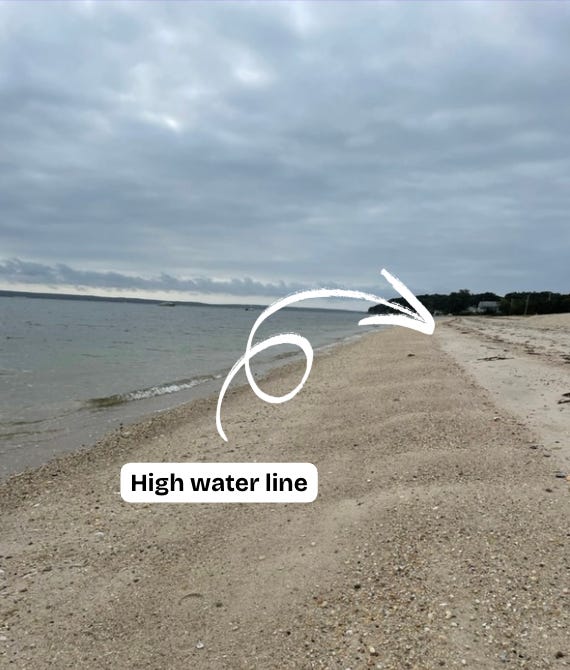
That’s why the New York Marine Rescue Center in Riverhead, Long Island, has stepped up its efforts to train volunteers as sea turtle rescuers to patrol beaches and help save the turtles. The rescue center brings cold-stunned turtles to their hospital, where they stay to be rehabilitated. Once they’ve fully recovered, they are released back into the wild from Tianna beach in the Hamptons.
After two days of training, Carolina and I are now officially level two sea turtle rescuers! We have a box in the trunk of our car that we can use if we need to bring a smaller turtle to the center. But for anyone who is untrained, it’s easy to help. If you’re walking along a beach in the fall or winter, keep your eye on the high tide line along the shore. Also, check the water for floating turtles. If you find one, call the NY Marine Rescue Center hotline at 631-369-9829 IMMEDIATELY. Do not touch or move the turtle unless they tell you to. If you can’t stay with the turtle, use sticks, rocks, or whatever is available to mark its location for rescuers.
We’ve done this training in New York, but there are rescue centers in every coastal state. If you live near a beach, Google your local center to learn more about becoming a rescuer.
Carolina and I did our first patrol yesterday, and we’re signed up to do another tomorrow. Walking along the beach in the fall and winter is one of our favorite activities, and now, we have an excuse to get out of the city and do it more often.
One day, if we rescue a turtle, I bet we’ll feel an incredible sense of pride when it is returned to the sea. A few weeks ago, we joined the Marine Rescue Center and the National Aquarium of Baltimore to release Pegasus, a 250-pound loggerhead turtle struck by a boat off Maryland’s coast over a year ago. After rehabilitation at the Baltimore Aquarium, Pegasus still had buoyancy issues, so it was transferred to the Marine Rescue Center, the nearest turtle hospital with a tank deep enough for Pegasus to regain diving skills.

Turtles are returned to the ocean with a tracker attached to a scute (like a scale) on the top of their carapace (upper shell). The scutes grow like fingernails and shed over time. The tracker will remain with Pegasus long enough to allow researchers to follow her return to the sea and learn about migration patterns.
If you were thinking beach season is coming to an end, I encourage you to reconsider. Winter walks on the beach are always so peaceful. Now they can be both peaceful and purposeful.
Announcement
I’ve recently rekindled my walking tour business and wanted to share the website, Sidewalk Secrets, with you all. If you’re in the NYC area and are interested in taking a tour, please reach out for more info. I have a series of tours pre-programmed and ready to go, but I also specialize in custom tours that satisfy your curiosity and align with your interests.
Recently, I did a tour for an executive from DC who was in town for a conference. She didn’t have any free time during her stay, but was available early in the morning and was interested in doing something extracurricular while she was here. We met at her hotel and did a one-hour morning walking tour of Central Park. She said she’s been to Central Park many times, but never experienced it like she did with me. Below are a few photos from that morning walk.
So if you want to spend a Saturday strolling the West Village, eat your heart out on a tasting tour, or squeeze in a quick walk and tour while you’re in town, reach out, check out the website, and let me know what you’re interested in! Tours are family-friendly.
I’m currently working on downloadable self-guided walks, and I’ll share the link here when they’re ready!
Words of the Week
“Behold the turtle. He makes progress only when he sticks his neck out.” ―James Bryant Conant
Photo of the Week
My husband, Michael, curated an exhibition that is currently on display at Craven Contemporary in Kent, CT. The works in the show are connected under the theme Inter | States.
“Through painting and sculpture, Inter | States explores the boundaries of inner and outer worlds where memory, identity, and place intersect. The title suggests both geographic and emotional terrains, reflecting the artists’ diverse approaches to transformation and connection across physical and conceptual boundaries.” —Michael De Feo
The opening reception was last month, and afterwards, when everyone had left and the doors were closed, Michael returned to the gallery to take in the show from the windowed wall. I captured the above moment of contemplative reflection after a hectic evening and feel like the image connects with the theme of the show.
Connection across physical boundaries. The interplay of light and dark. The moments between socializing with friends, artists, and collectors, and the transition into the quiet space inside our car for the drive home.
If you live near Kent, CT, please check out the show! It’s open on weekends through November 16th. Or, you can always peruse the works (below) on the Craven Contemporary Artsy page.



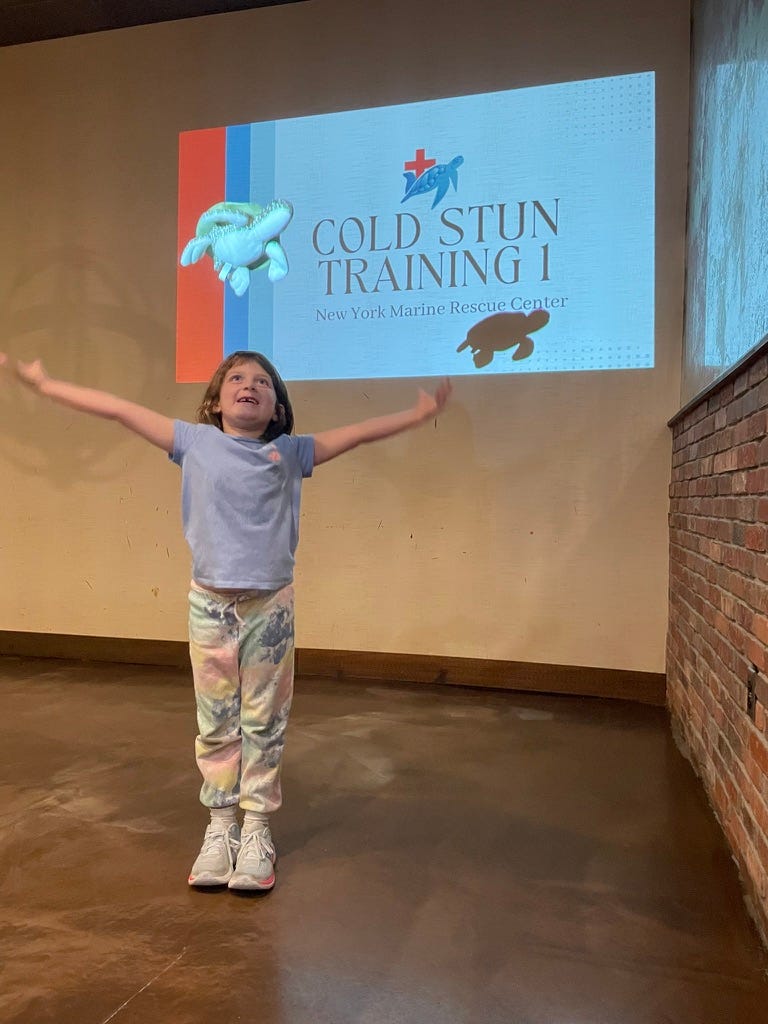

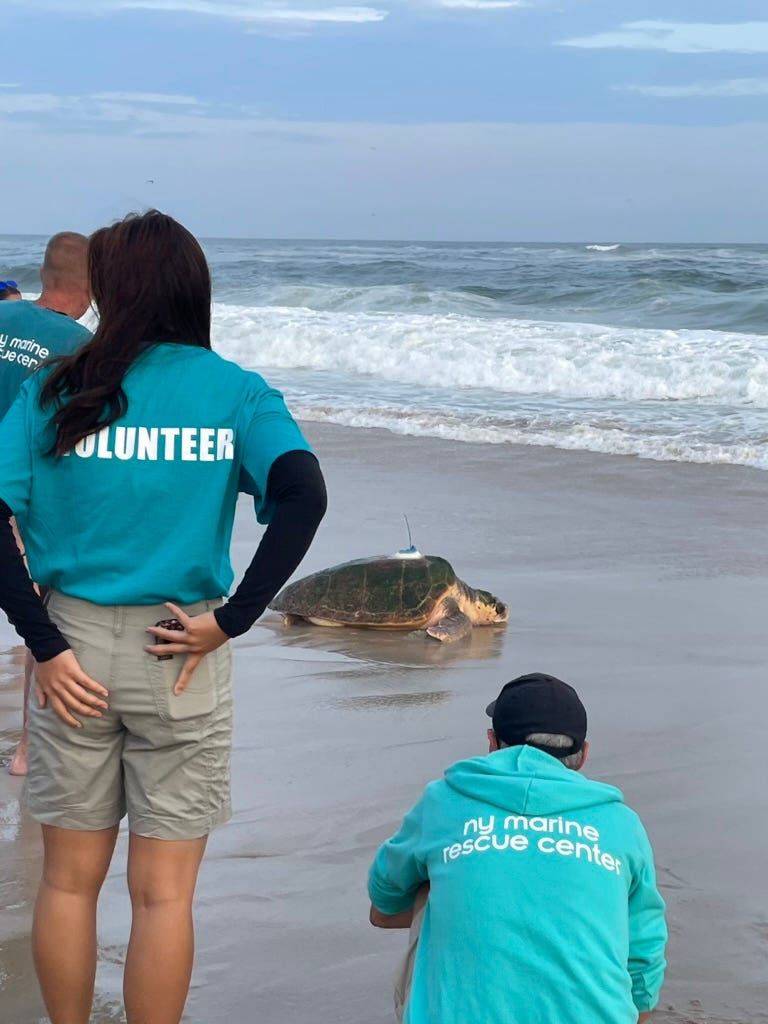

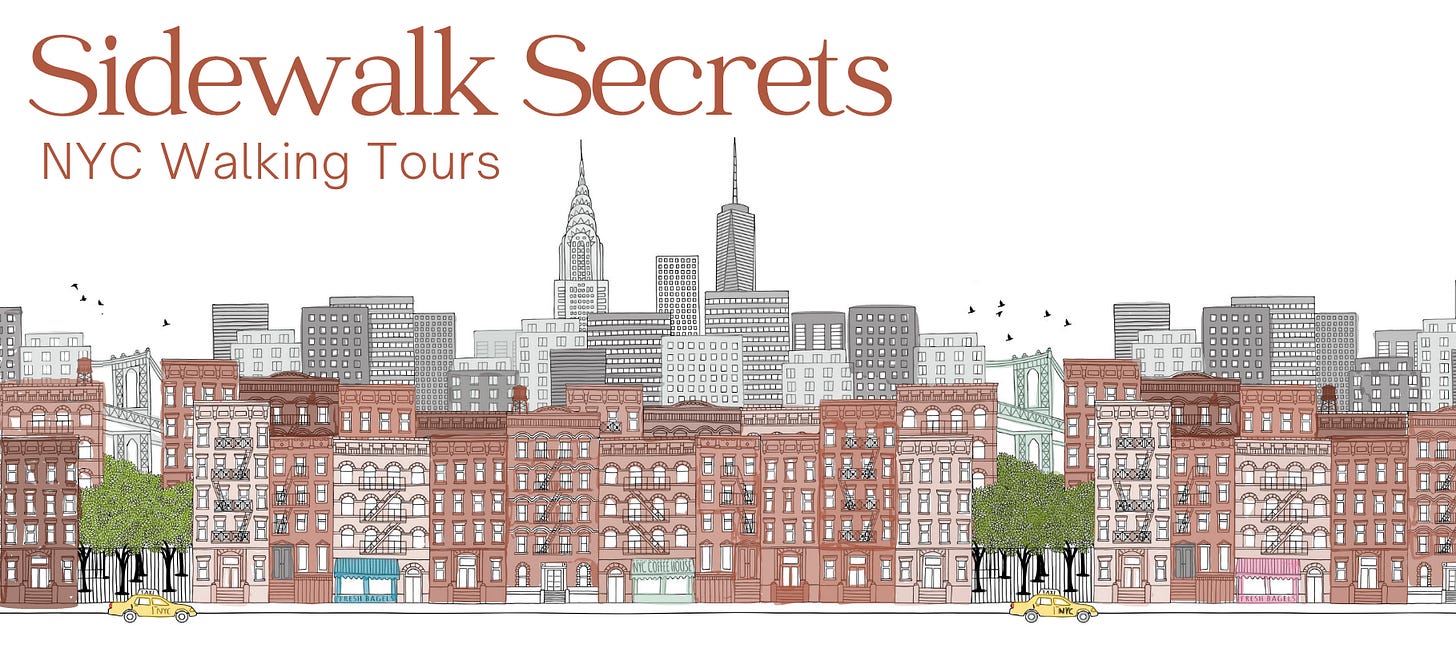
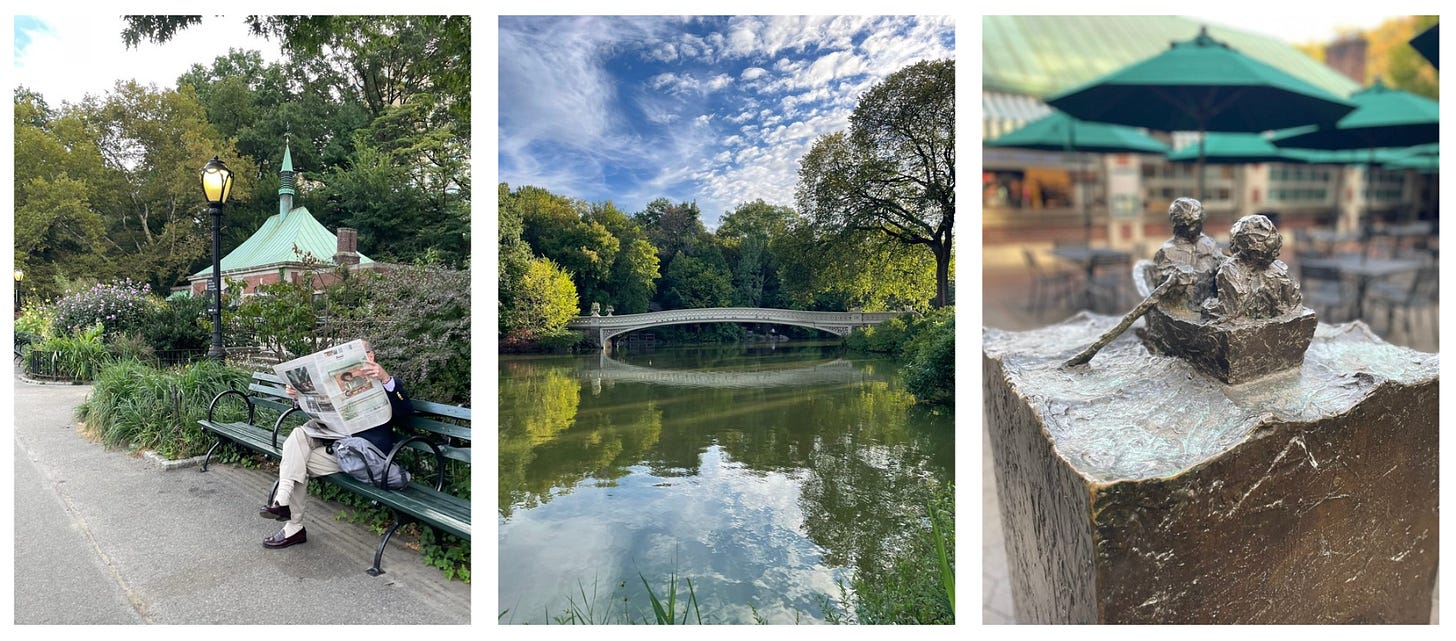
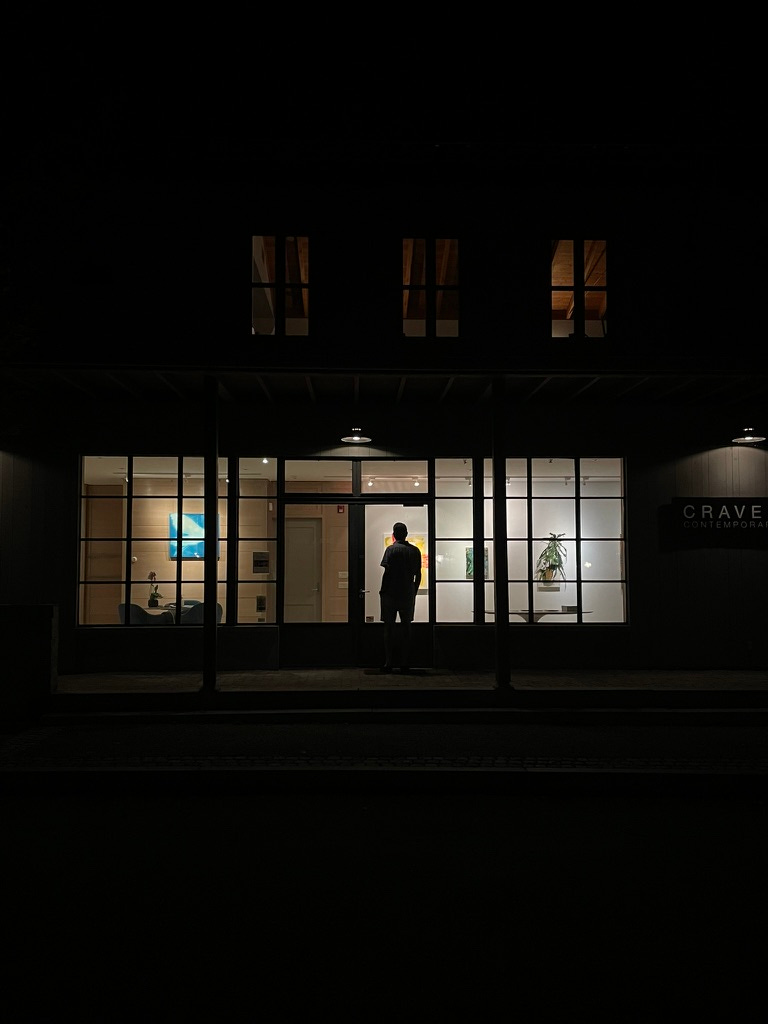

I hope you and Carolina find a turtle to rescue!
Love how you and Carolina are helping the sea turtles! I also checked out your Sidewalk Secrets website - it looks fabulous!